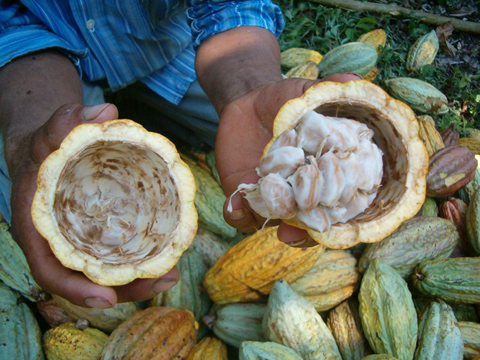Nature's Manufacturer of the "Food of the Gods!"
From Bean to Tree
The cacao tree's reproduction cycle is yet another of its unique features. As mentioned on the Classification Page, the tree is cauliflorous, meaning the flowers and fruits grow on the trunk. This trait along with the warm, moist environment of the rainforest allows it to grow flowers and fruits all year long. Because of this, the flowers and fruits end up being on the tree at the same time, a rare characteristic.
| The flowers are white or pale pink, scentless and pollinated by midges. They are hermaphroditic, but not self-compatible. This means the tree can not fertilize itself, although it has both male and female sex organs. This is a big problem on cacao plantations because the midges that are required to pollinate the trees are not naturally found in that habitat. Once fertilized, the flower develops into a fruit containing about 50 seeds. These pods can be a range of colors including red, yellow, orange, purple or green and take about six months to become ripe. When the fruit is finally ready, monkeys, birds and other animals will pick the pods for their fleshy insides and discard the seeds. (See Adaptations and Interactions Page) These seeds, with the right conditions, will grow into a new cacao tree and the cycle will begin again. |
The cacao tree has an amazing history...Learn about it here!
Copyright © 2007, Design by: Sunlight webdesign

